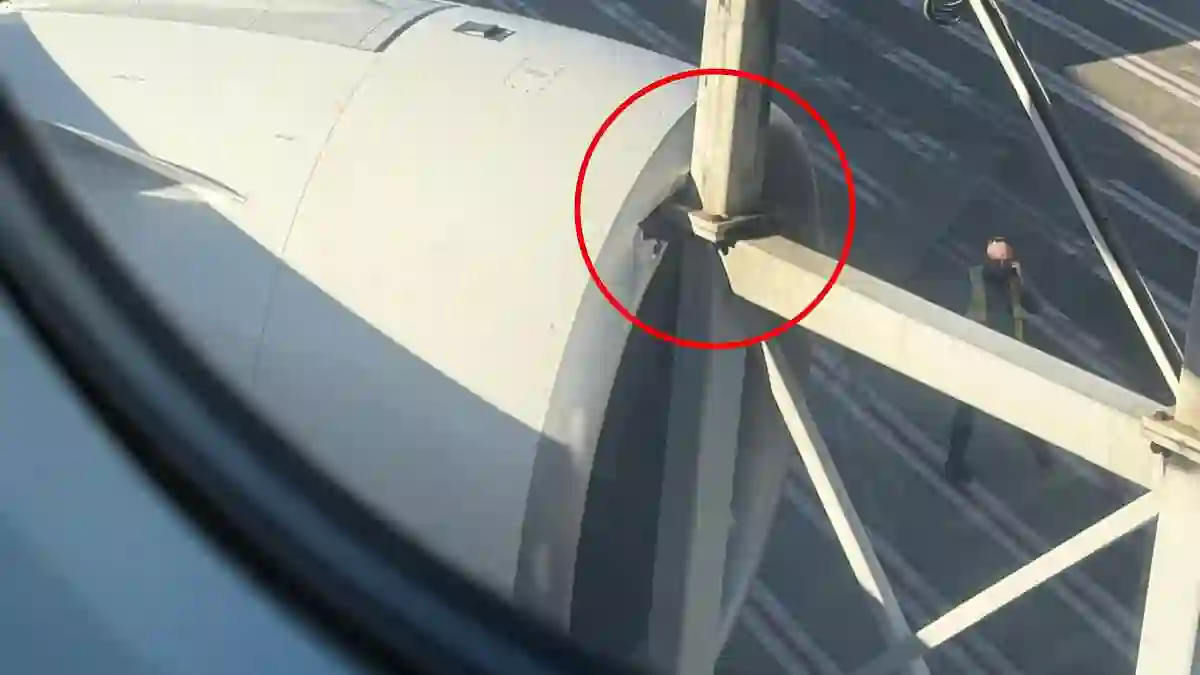What was meant to be a routine long-haul flight from Sydney to Johannesburg turned into a full-day delay after a Qantas Airbus A380 suffered damage—before even leaving the ground.
And if that wasn’t troubling enough, the incident comes just months after a serious workplace accident involving one of the airline’s staff.
Let’s break down what happened.
Aerobridge Accident Forces Major Flight Delay
On Saturday morning at Sydney Airport, things took a chaotic turn when an aerobridge—used to connect passengers from the terminal to the aircraft—accidentally rammed into one of the engines of Qantas flight QF63.
The aircraft, an Airbus A380, was preparing for a 15-hour journey to Johannesburg, South Africa.
According to reports, the aerobridge’s footings struck both the top and bottom parts of one of the plane’s four engines.
This forced Qantas to cancel the flight, originally scheduled for 9:30 a.m. Saturday, and delay it until 6:45 a.m. the following day.
Passengers Disembark as Engineers Move In
Thankfully, no one was injured in the collision.
Passengers had already boarded the aircraft but were asked to disembark via the lower deck once the damage was discovered.
Qantas has launched an investigation into how the aerobridge ended up crashing into the aircraft in the first place.
In a statement, the airline said:
“The aircraft will be inspected by engineers in Sydney and repaired before returning to service.”
The airline also acknowledged the inconvenience:
“We know flight disruptions are frustrating, and we apologise to our customers for the impact to their travel.”
Affected passengers were given hotel accommodations for the night while they waited for the rescheduled departure.
A Troubling Pattern for Qantas Ground Safety
The aerobridge incident isn’t the only concern Qantas has faced lately when it comes to ground operations.
Back in May, a horrifying accident left one of its employees critically injured.
Olivia Hristovska, a 51-year-old customer experience supervisor, fell six metres through a gap in a damaged aerobridge at Sydney Airport.
Security footage shows she had been looking out the windows of the aerobridge wall before stepping into the gap and plummeting to the tarmac below.
Olivia’s Life-Changing Injuries and Family’s Ongoing Struggles
Ms Hristovska suffered a laundry list of catastrophic injuries: a fractured spine, serious head trauma, a broken collarbone, a collapsed lung, and more.
She was placed into a medically induced coma after the fall.
Her daughters, Monique and Sienna, recently revealed that they first learned of their mother’s accident through hospital staff and media coverage—not directly from Qantas.
Now acting as full-time carers, the sisters have spoken out about the lasting impact of the fall.
Monique, 27, shared that while her mother has been discharged from the hospital, her life—and identity—has completely changed.
“Bones can heal, but the brain… you don’t know.
She’s lost her identity,” Monique said.
Family Demands More Accountability
The family isn’t staying quiet. Monique emphasized the emotional toll of the accident and the long road ahead for both their mother and the entire family unit.
“We feel it’s important the full human impact of this incident is understood—not just the event itself, but the long-term effects on her body, mind, and our family,” she said.
Since the accident, Monique has reportedly stayed by her mother’s side every step of the way.
Safety Concerns Continue to Mount
While Qantas is looking into both incidents, the back-to-back events are raising concerns about operational safety—not just in the air, but on the ground.
As investigations continue, the airline faces increasing pressure to improve oversight and prevent further accidents.
With one plane grounded and one employee still recovering from life-altering injuries, the spotlight is now firmly on Qantas’s safety protocols and their handling of critical situations.



